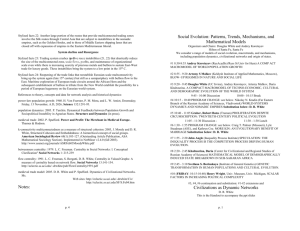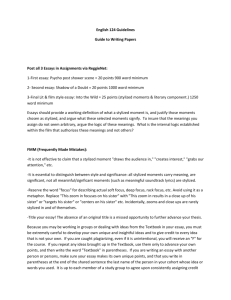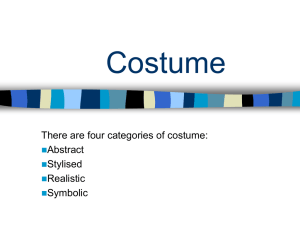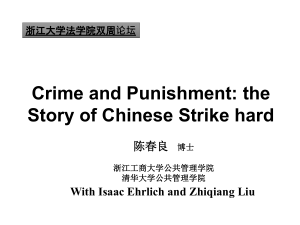What do we know about entry
advertisement
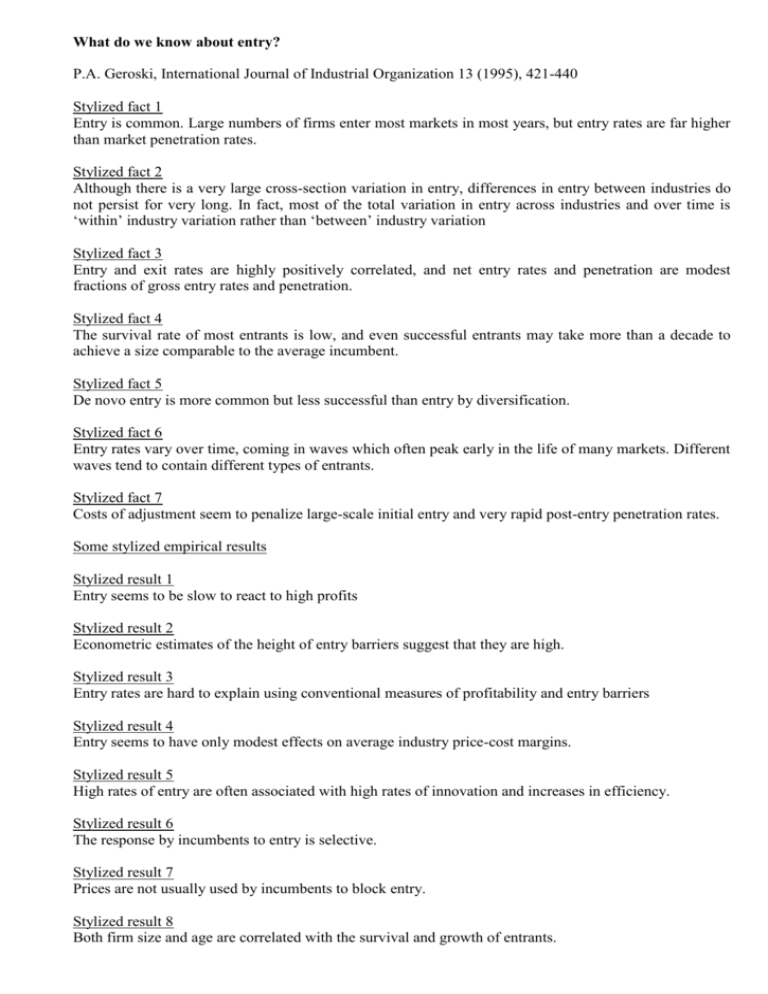
What do we know about entry? P.A. Geroski, International Journal of Industrial Organization 13 (1995), 421-440 Stylized fact 1 Entry is common. Large numbers of firms enter most markets in most years, but entry rates are far higher than market penetration rates. Stylized fact 2 Although there is a very large cross-section variation in entry, differences in entry between industries do not persist for very long. In fact, most of the total variation in entry across industries and over time is ‘within’ industry variation rather than ‘between’ industry variation Stylized fact 3 Entry and exit rates are highly positively correlated, and net entry rates and penetration are modest fractions of gross entry rates and penetration. Stylized fact 4 The survival rate of most entrants is low, and even successful entrants may take more than a decade to achieve a size comparable to the average incumbent. Stylized fact 5 De novo entry is more common but less successful than entry by diversification. Stylized fact 6 Entry rates vary over time, coming in waves which often peak early in the life of many markets. Different waves tend to contain different types of entrants. Stylized fact 7 Costs of adjustment seem to penalize large-scale initial entry and very rapid post-entry penetration rates. Some stylized empirical results Stylized result 1 Entry seems to be slow to react to high profits Stylized result 2 Econometric estimates of the height of entry barriers suggest that they are high. Stylized result 3 Entry rates are hard to explain using conventional measures of profitability and entry barriers Stylized result 4 Entry seems to have only modest effects on average industry price-cost margins. Stylized result 5 High rates of entry are often associated with high rates of innovation and increases in efficiency. Stylized result 6 The response by incumbents to entry is selective. Stylized result 7 Prices are not usually used by incumbents to block entry. Stylized result 8 Both firm size and age are correlated with the survival and growth of entrants.



